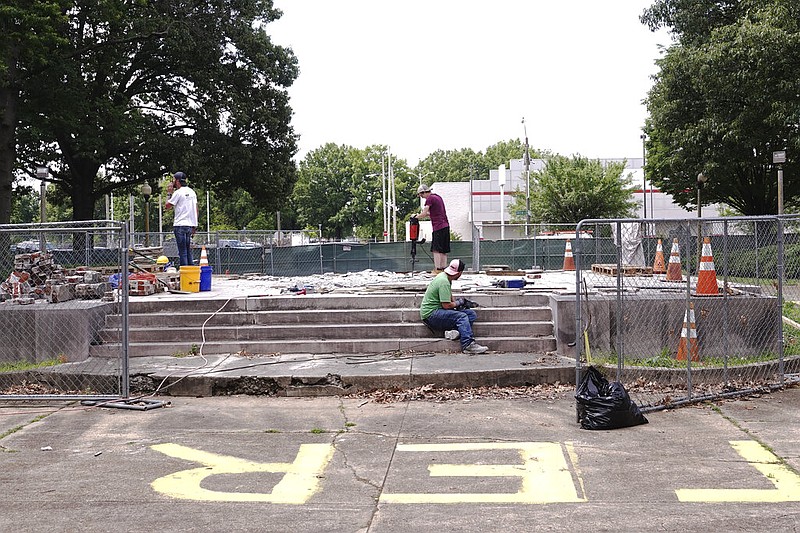MEMPHIS — Workers removed the remains of Confederate Gen. Nathan Bedford Forrest and his wife from a Tennessee park on Monday, officials announced Friday. It marks another step in the process of moving their bodies out of Memphis.
Sons of Confederate Veterans spokesman Lee Millar said the remains of the former slave trader and his wife are being held in an undisclosed location until they can be transported to the National Confederate Museum at Elm Springs in Columbia, Tenn., news outlets reported.
Owned by the Sons of the Confederate Veterans, the museum opened to the public in October. It is located about 200 miles east of Memphis.
The removal of the remains of the early Ku Klux Klan leader from Memphis, where he served as an alderman and traded slaves before joining the Confederate Army, would end a long-running dispute over his legacy and presence in the majority-Black city.
It is also another example of how cities and activists have taken steps in recent years to get rid of statues and monuments of historical figures who supported the South’s secession and led the fight against the North, from Gen. Robert E. Lee to Jefferson Davis, the president of the Confederacy.
Crews arrived June 1 at Health Sciences Park to begin work on Forrest’s tomb. The park formerly bore the name of Forrest and featured a statue of the cavalryman on a horse, but the name has been changed and the statue removed in recent years.
With the approval of Forrest’s relatives, the Sons of Confederate Veterans is overseeing the move. A judge approved it late last year, ending a long legal battle.
The remains of Forrest and his wife were moved from a Memphis cemetery and buried under the statue of Forrest, a former Memphis City Council member, in 1904. The city took down the statue in December 2017 after selling the public park to a nonprofit group, thus circumventing a state law barring the removal of historic monuments from public areas.
A judge in Nashville ruled that the city and Memphis Greenspace, the nonprofit that made the park privately operated, removed the statue legally. The statue will also be moved to the Confederate museum in Columbia.
The park where Forrest was buried has been the site of protests associated with the Black Lives Matter movement. Activists have long called for the removal of both the statue and the remains. The words “Black Lives Matter” have been painted in yellow by activists on a walkway surrounding the tomb.
CORRECTION: Workers removed the remains of Confederate Gen. Nathan Bedford Forrest and his wife from a Tennessee park on Monday and announced the removal on Friday. An earlier version of this story misstated the day in which the bodies were removed.
